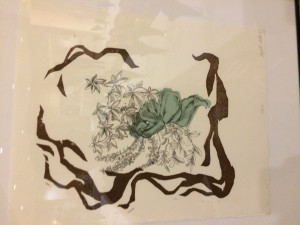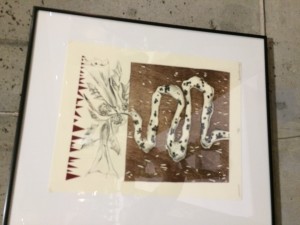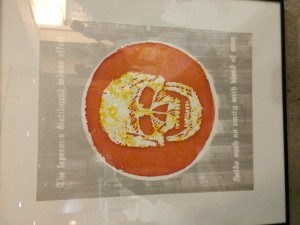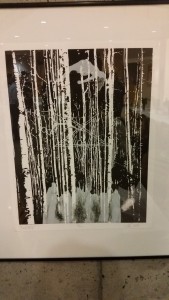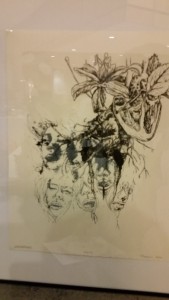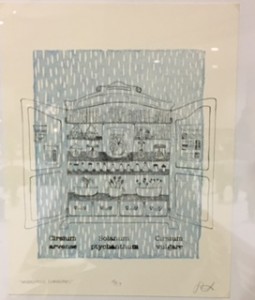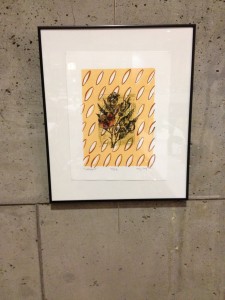Last week, I went downstairs to check out the new artwork now adorning the Rose Dining hall. The paintings are interpretations by students in AAP of poisonous plants. I don’t know much about botany, or fine art, so it was a good experience to stretch my interests a little.
Both the art professor and the botany professor who aided with the project were at the showcase, and as I was looking around at the abstract paintings I asked them a few questions about how the plants were chosen and how the art was made. I learned a bit more about how the paintings were either computer generated and laser printed onto the paper, or done with etchings of different materials. I never really considered creating paintings or anything on a computer, as artwork has always been a physical thing for me, and I only ever use my Adobe products to make designs, videos or manipulate images. But the process sounded cool, if tiring.
One painting caught my eye, which was a black and white painting streaked vertically by what looked like birch trees. In a faint gray, I could see some molecule drawn in the background, what I assume would be the active toxin of that particular plant. And drawn at the very top is an image of a floating woman, as if possessed. But as I asked the professors, I don’t think anyone knew what plant it was exactly. I want to say it had to have been the birch tree, which is slightly poisonous in the sense that it might cause a rash, but that doesn’t seem nearly as grave as the painting would make it out to be. The drama and weight I felt viewing the artwork made it seem like it should have the toxicity of a nightcap mushroom, or something causing death or hallucination. I suppose it’s all up to interpretation.

